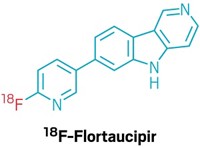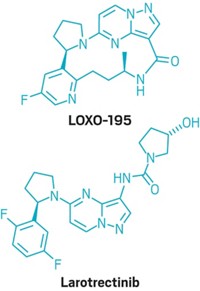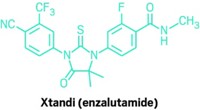Advertisement
Grab your lab coat. Let's get started
Welcome!
Welcome!
Create an account below to get 6 C&EN articles per month, receive newsletters and more - all free.
It seems this is your first time logging in online. Please enter the following information to continue.
As an ACS member you automatically get access to this site. All we need is few more details to create your reading experience.
Not you? Sign in with a different account.
Not you? Sign in with a different account.
ERROR 1
ERROR 1
ERROR 2
ERROR 2
ERROR 2
ERROR 2
ERROR 2
Password and Confirm password must match.
If you have an ACS member number, please enter it here so we can link this account to your membership. (optional)
ERROR 2
ACS values your privacy. By submitting your information, you are gaining access to C&EN and subscribing to our weekly newsletter. We use the information you provide to make your reading experience better, and we will never sell your data to third party members.
Business
Lilly Adds Imaging Agents
Radiochemistry: Purchase of Avid will bring new Alzheimer’s detection tool
by Michael McCoy
November 15, 2010
| A version of this story appeared in
Volume 88, Issue 46
Eli Lilly & Co. has agreed to acquire Avid Radiopharmaceuticals, a developer of molecular imaging compounds for disease monitoring. The purchase will take the beleaguered drug company into a new market and provide it with a novel tool for developing future drugs.
Lilly will pay $300 million for Philadelphia-based Avid and could make another $500 million in payments to Avid’s owners depending on the future success of florbetapir F 18, the firm’s lead compound. Avid recently asked FDA to approve florbetapir F 18 for detecting amyloid-β, the main component of the plaque found in the brains of Alzheimer’s disease patients.
Avid was founded in 2004 by Daniel M. Skovronsky, who got the idea for the company while completing M.D./Ph.D. and neuropathology programs at the University of Pennsylvania. For help in developing new imaging agents, he turned to one of his advisers, Hank F. Kung, a professor of radiopharmaceutical science at Penn.
Kung says he thought Skovronsky was crazy to turn his back on academia to chase amyloid-β detection. “People were wondering if the whole concept was correct,” he recalls. But Kung signed on and helped Skovronsky come up with florbetapir F 18, which contains radioactive fluorine-18 at the polyether end. When administered, the compound sticks to brain plaque and lights up when scanned by positron emission tomography.
For Lilly, florbetapir F 18 provides entry into the Alzheimer’s disease market after a big setback in August. The company was forced to end development of the Alzheimer’s treatment semagacestat after patients taking it actually fared worse than those taking a placebo. And Lilly needs new products. Stock analysts say the company has the highest exposure to generics competition of any of the big pharma firms (see page 23).
Another plus of the deal, Kung notes, is that Avid’s imaging technology can be broadly integrated into drug development to choose patient populations and track the efficacy of potential treatments. Now in clinical trials at Avid are imaging agents that help detect Parkinson’s disease and diabetes. “Lilly clearly sees the potential of this,” Kung says.






Join the conversation
Contact the reporter
Submit a Letter to the Editor for publication
Engage with us on Twitter